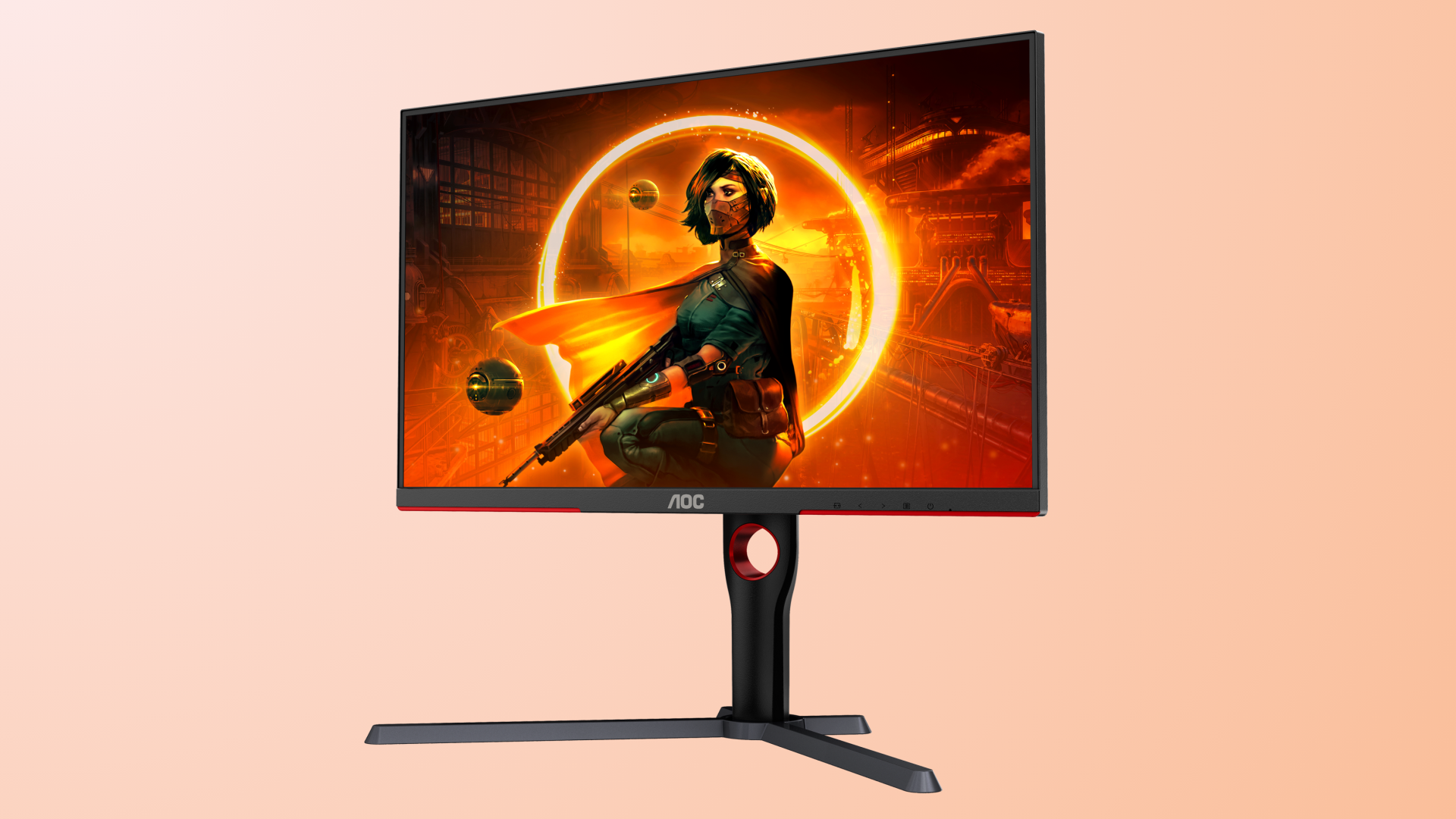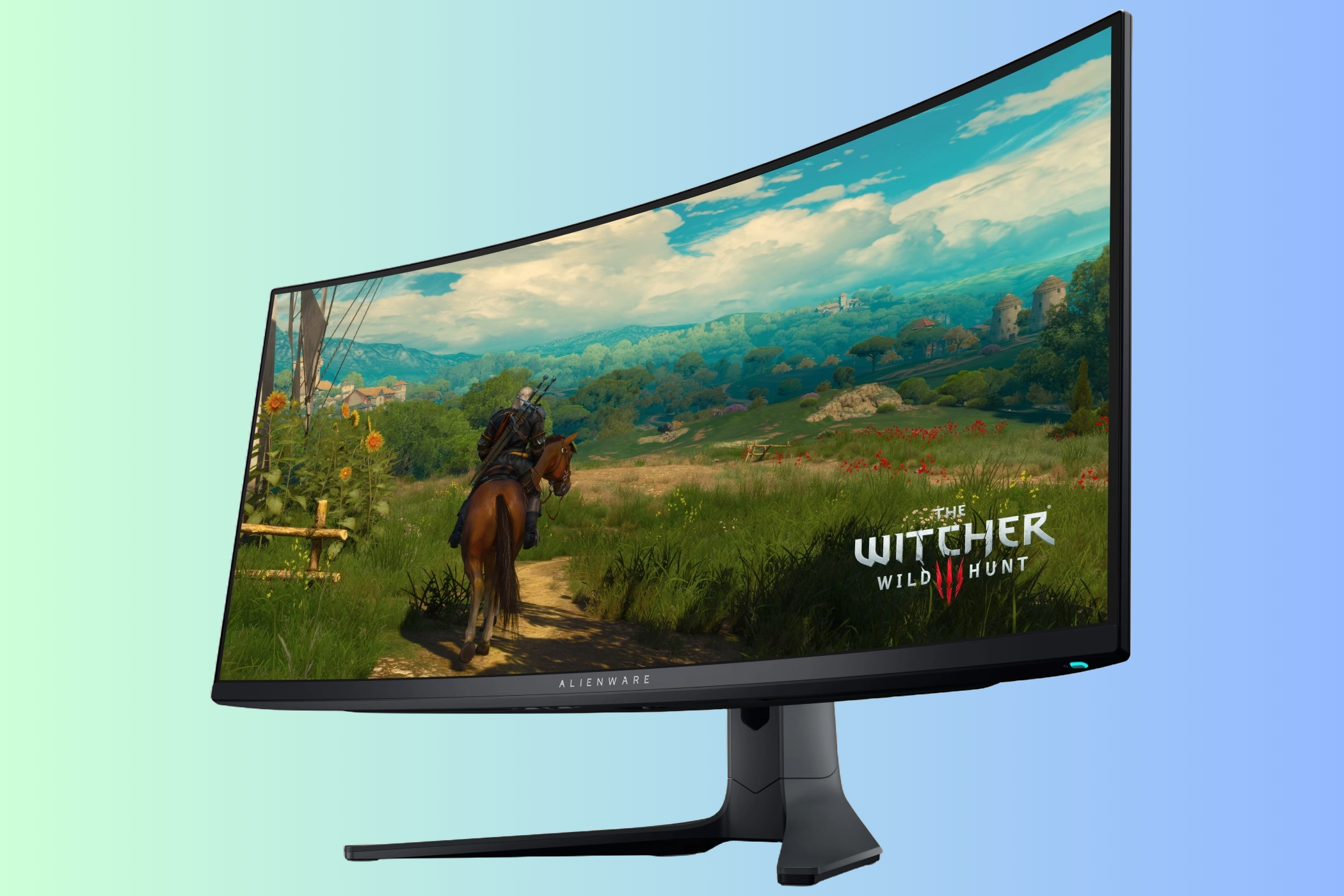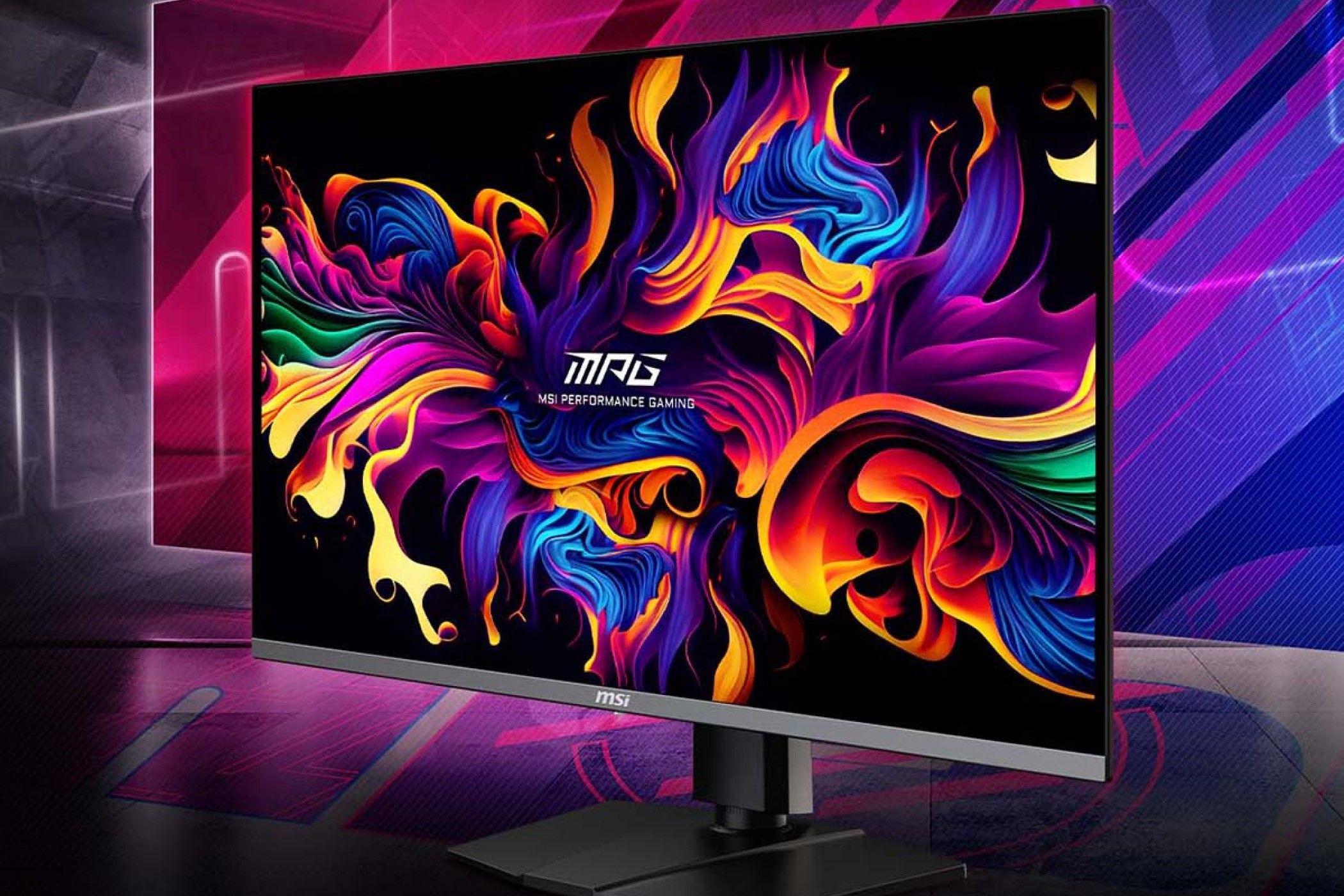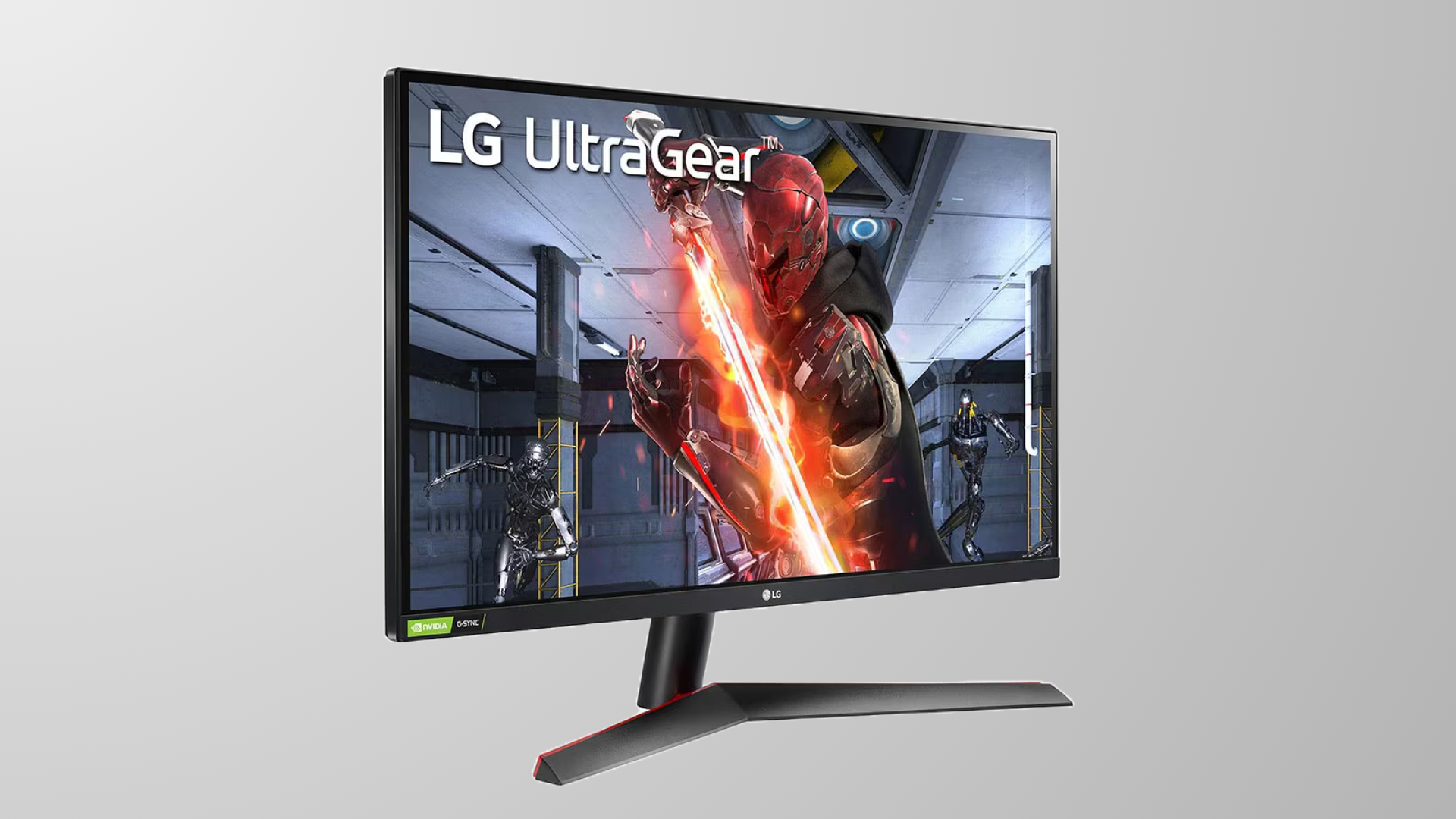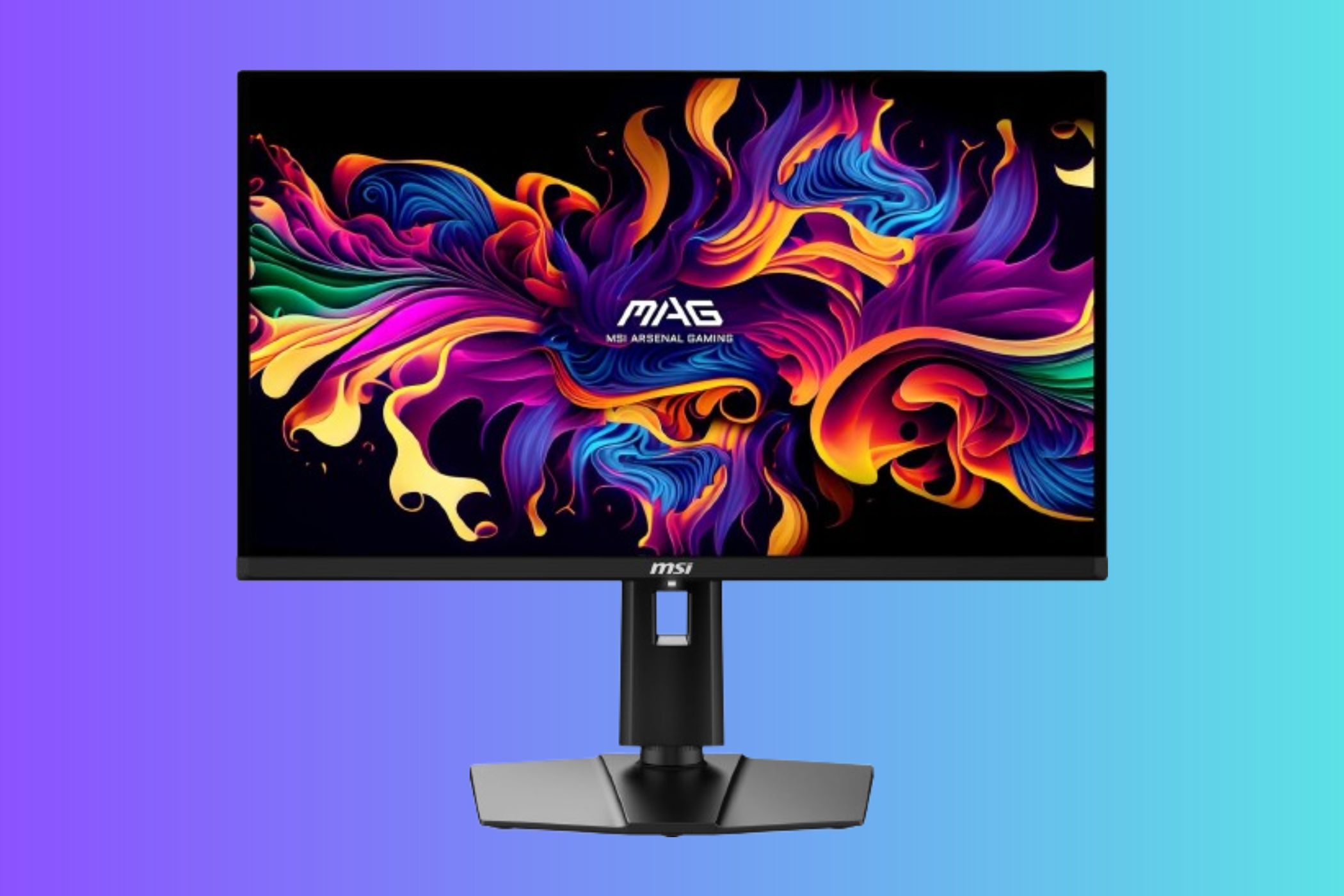Trying to find your next gaming monitor can turn into a proper odyssey because the market is teeming with exciting options in every segment. Why don’t you sit back, relax, and check out our recommendations instead?
The resolution is the most important thing to consider when shopping for a new gaming monitor. Nowadays, 1440p resolution is the mainstream choice, with the most significant chunk of the current crop of gaming monitors featuring 1440p native resolution.
1440p offers the best image quality and refresh rate combination and is much easier on your GPU than 4K. You can get an exceptiona high refresh rate gaming experience in the most demanding AAA games at 1440p and high graphics settings (no ray tracing, though) without needing the best graphics card on the market residing inside your PC’s case.
For example, even the aging RTX 3080 or the RX 6800 XT can provide a high refresh rate experience with high settings and upscaling at 1440p. If you want to game at native resolution, consider getting an RTX 4070 Ti Super, RX 7900 XT, or something more powerful.
If you opt for 4K, know you’ll need a pretty beefy rig to run the most demanding AAA games at 60 FPS and above with high or max settings—like the RTX 4080, RX 7900 XTX, or something similar.
Lastly, 1080p can still be a solid choice even in 2025 if you own a mid-range GPU and want a high-refresh-rate gaming experience with most options cranked to high or ultra. And while 1080p was the de facto choice for esports fans for many years, nowadays, you can get a 480Hz 1440p OLED gaming monitor that will blow any 1080p monitor out of the water with regard to image quality, fluidity, and motion performance.
Next, it’s time to pick the refresh rate. Most modern budget gaming monitors offer refresh rates between 144Hz and 165Hz; mid-range models start at about 165Hz and go all the way up to 240Hz, while 240Hz and above is the realm of high-end gaming monitors.
Once you settle on the resolution and refresh rate, consider which diagonal your next gaming monitor should sport. A 24-inch diagonal is the sweet spot for 1080p monitors, a 27-inch size is the best choice for 1440p gaming monitors, and a 32-inch diagonal is where you’ll have the best experience with 4K gaming monitors. It’s also worth considering getting a 27-inch 4K gaming monitor since they offer a super crisp image and take less space than 32-inch models.
If you’re after an ultrawide monitor, most models feature 1440p ultrawide resolution (3440×1440) and a 34-inch diagonal. I’m using one of those and can say that said combo works rather well for gaming and productivity, but my aging RTX 3070 isn’t enough anymore for a 60 FPS, high settings gaming experience in demanding AAA games.
OLED ultrawide monitors sport 39-inch and 45-inch diagonals, but most are limited to the 1440p ultrawide resolution, which looks rather grainy on such a large panel. If your goal is to completely immerse yourself in the games you’re playing, think about getting a super ultrawide gaming monitor.
Next, it’s time to decide whether you want an OLED or an LCD monitor. While OLED monitors are considered premium options, you can snag a budget OLED monitor for less than $550, which is almost the realm of the mid-range category.
Compared to LCD options, OLED monitors offer much faster motion performance, better HDR, and superior image quality. They have near instantaneous response time, making them a great choice both for multiplayer-focused gamers and gamers who prefer playing single-player games and want the best image quality possible.
That said, many OLED monitors have issues when displaying text due to their unconventional subpixel layout. If you plan to use your next gaming monitor for work as well, it would be best to check out one in person and see whether text fringing bothers you. There’s also the OLED burn-in issue, but the latest models come with several techniques, such as Pixel Shift and auto-dimming, which should prolong the panel’s lifespan and prevent burn-in from happening.
LCD models, on the other hand, don’t have as fast response times. Mini-LED LCD monitors, however, feature full array local dimming and can offer a similar HDR experience to OLEDs and much higher maximum brightness. They’re also more affordable. You can get a decent HDR experience for less than $300.
VA panels, which have the slowest response time, are usually found on budget offerings, while IPS panels are found on mid-range and high-end LCD monitors. As for the ancient TN panel technology, these days, it’s primarily used on high-end esports monitors that sport ultra-high refresh rates.
Other features to consider when shopping for a new gaming monitor include the number and type of video ports, especially if you game on PC and consoles. If you plan to use your console with your next gaming monitor, make sure the monitor works well with the current gaming consoles since some models don’t play well with Xbox Series consoles and PlayStation 5. If you want a deep dive into picking the right monitor for your needs, check our guide that provides tons of useful information about said topic.
|
How Did We Research |
||
|
Models Evaluated |
Hours Researched |
Reviews Analyzed |
|
44 |
9 |
39 |
How-To Geek’s product recommendations come from the same team of experts that have helped people fix their gadgets over one billion times. We only recommend the best products based on our research and expertise. We never accept payment to endorse or review a product. Read More »
|
Pros |
Cons |
|---|---|
|
480Hz refresh rate and 1440p resolution |
Expensive |
|
Impressive HDR |
Has noticeable VRR flicker |
|
Next-gen WOLED panel doesn’t suffer from text fringing issues |
|
|
Zero noise thanks to a heatsink used for heat dissipation |
|
|
Great color accuracy out of the box |
Looking for the best gaming monitor money can buy? The ASUS ROG Swift PG27AQDP should definitely be on your shortlist. This 27-inch, 1440p OLED monitor has an insanely high 480Hz refresh rate, offering a crisp image that beats any other monitor on the market, aside from other 480Hz OLEDs, regarding motion clarity.
The ROG Swift PG27AQDP isn’t just great for fast-paced multiplayer games. It features a max brightness of 1300 nits in HDR, which should provide a terrific HDR experience. You’ve also got superb factory-calibrated colors, whisper-quiet operation because it has a heatsink instead of a fan to cool off the OLED panel, and a USB hub made of two USB ports.
The OLED panel is LG’s latest generation WOLED panel, allowing higher maximum brightness while removing text fringing. This makes the ASUS ROG Swift PG27AQDP a wonderful choice for gamers who use the same monitor for gaming and work.
Other features include two HDMI 2.1 and a single DisplayPort 1.4 video input, excellent build quality, very low input lag, and a three-year warranty covering burn-in. No product is perfect, and the ROG Swift PG27AQDP has a noticeable VRR flicker that’s hard to perceive at high refresh rates. There’s also the OLED burn-in proneness, but the three-year warranty should provide peace of mind.
The LG 27GX790A-B uses the same panel and performs similarly to the ASUS ROG Swift PG27AQDP. If you’d like to game in 4K instead of 1440p, check out the MSI MPG321URX or the ASUS ROG Swift OLED PG32UCDP, which works at 240Hz in 4K and 480Hz in 1080p.
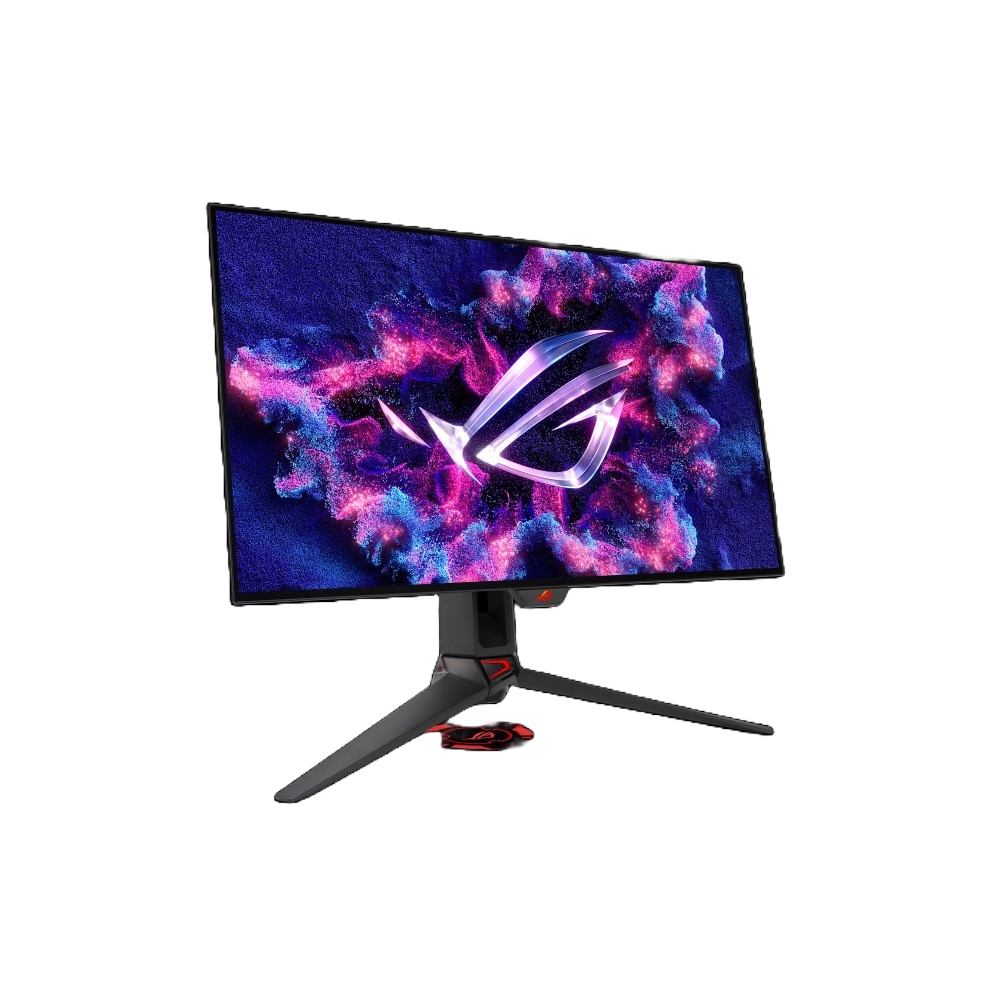

Best Gaming Monitor Overall
ASUS ROG Swift PG27AQDP
The ASUS ROG Swift PG27AQDP is hands down the best 1440p OLED gaming monitor money can buy. 1440p resolution combined with a 480Hz refresh rate, superb motion clarity, impressive HDR, no text fringing issues, and incredible color accuracy create an unbeatable combo no other 1440p OLED monitor can match.
Best Budget Gaming Monitor: AOC Q27G3XMN
|
Pros |
Cons |
|---|---|
|
Excellent HDR |
Poor viewing angles |
|
Costs less than $300 |
VRR flicker |
|
Full array local dimming |
|
|
Excellent contrast ratio |
|
|
More than decent motion performance |
The AOC Q27G3XMN is a surprisingly affordable 27-inch, 1440p Mini-LED monitor with excellent HDR for less than $300. The VA panel used has a very high native contrast ratio. Combined with capable local dimming made of 336 dimming zones, the result is an impressive HDR experience with very little blooming. An awe-worthy achievement for a budget gaming monitor.
A VA panel also means the AOC Q27G3XMN doesn’t offer the best motion performance. Still, if you don’t play many fast-paced multiplayer games and focus more on single-player titles, the response time of said VA panel should be high enough for a low-motion blur gaming experience with just a tad bit of black smearing.
The maximum refresh rate of 180Hz combined with 1440p resolution should make every graphics card except flagships sweat to deliver the maximum frame rate with high or ultra settings. Regarding disadvantages, VA panels are known to have poor viewing angles, and the one used here is no exception. Also, you should expect noticeable VRR flicker at frame rates below 100 FPS.
If the AOC Q27G3XMN doesn’t work for you, check out the AsRock PG27QFT2A, which doesn’t support HDR. On the flip side, the PG27QFT2A sports the same refresh rate, size, and resolution and comes with a faster IPS panel. The AOC 24G4 and the KTC H25T7 are great choices for gamers who want to pay less than $150 for a quality budget gaming monitor.
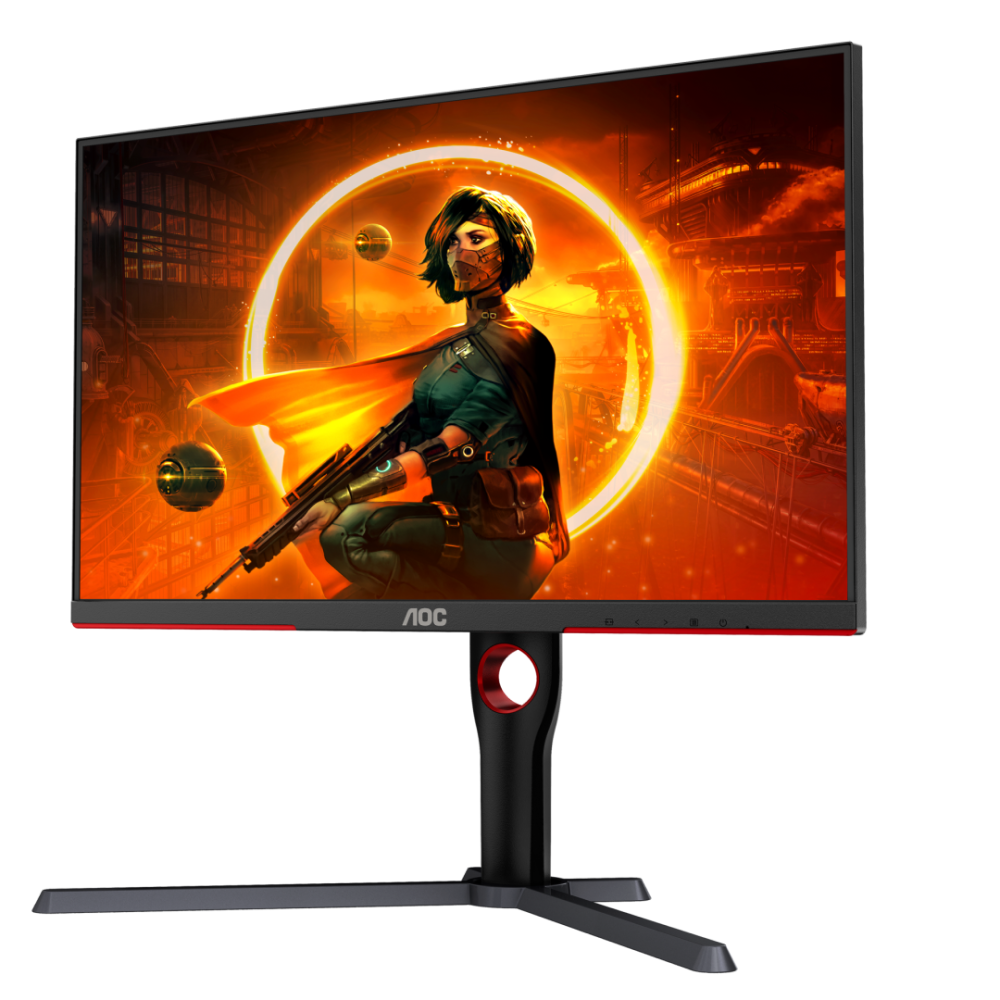

Best Budget Gaming Monitor
AOC Q27G3XMN
Stunning HDR and full array local dimming for less than $300? It’s possible thanks to the AOC Q27G3XMN. The only budget thing about this gaming monitor is the price, everything else puts it clearly in the mid-range gaming monitor market. A proper steal of a Mini-LED gaming monitor.
|
Pros |
Cons |
|---|---|
|
Excellent HDR |
Blacks look like grays in bright environments |
|
Excellent VRR support and low input lag |
Text fringing issues |
|
Top-notch motion clarity |
VRR flicker |
|
Wide color gamut with great color accuracy |
|
|
165Hz refresh rate |
The Alienware AW3423DWF is getting old in the tooth, but it’s still one of the best bang-for-buck gaming monitors on the market. It offers a 165Hz refresh rate, lower than the 240Hz offered by newer OLED ultrawides, but you’ll hardly notice the difference. The killer feature here is the price, because the AW3423DWF is often available for $650 or less, a fantastic price for an ultrawide OLED gaming monitor.
The QD-OLED panel adorning the Alienware AW3423DWF has vivid colors that are pretty accurate out-of-box, superb HDR, and pretty solid motion clarity thanks to its 165Hz refresh rate combined with the near-instantaneous pixel response time found on every OLED monitor. The monitor is curved, but its relatively light 1800R curve radius improves immersion without distorting the image.
You’re also getting very low input lag and great VRR support despite the monitor not coming with a G-Sync module like its closest kin, the Alienware AW3423DW. Conversely, due to rocking a QD-OLED panel, which lacks a polarizing layer, blacks look more like dark grays or purples in brightly lit rooms. There’s also the text fringing issue and the fact that the monitor suffers from noticeable VRR flicker.
Want something newer with a higher refresh rate but also more expensive? Check out the MSI MPG 341CQPX or the LG 34GS95QE. A 34-inch diagonal doesn’t cut it for your needs? The LG 39GS95QE and the LG 45GS95QE come in 39-inch and 45-inch sizes, respectively and both feature a 240Hz refresh rate. On the flipside, their native resolution is 3440x1440p, which doesn’t look as sharp as on a smaller, 34-inch panel.
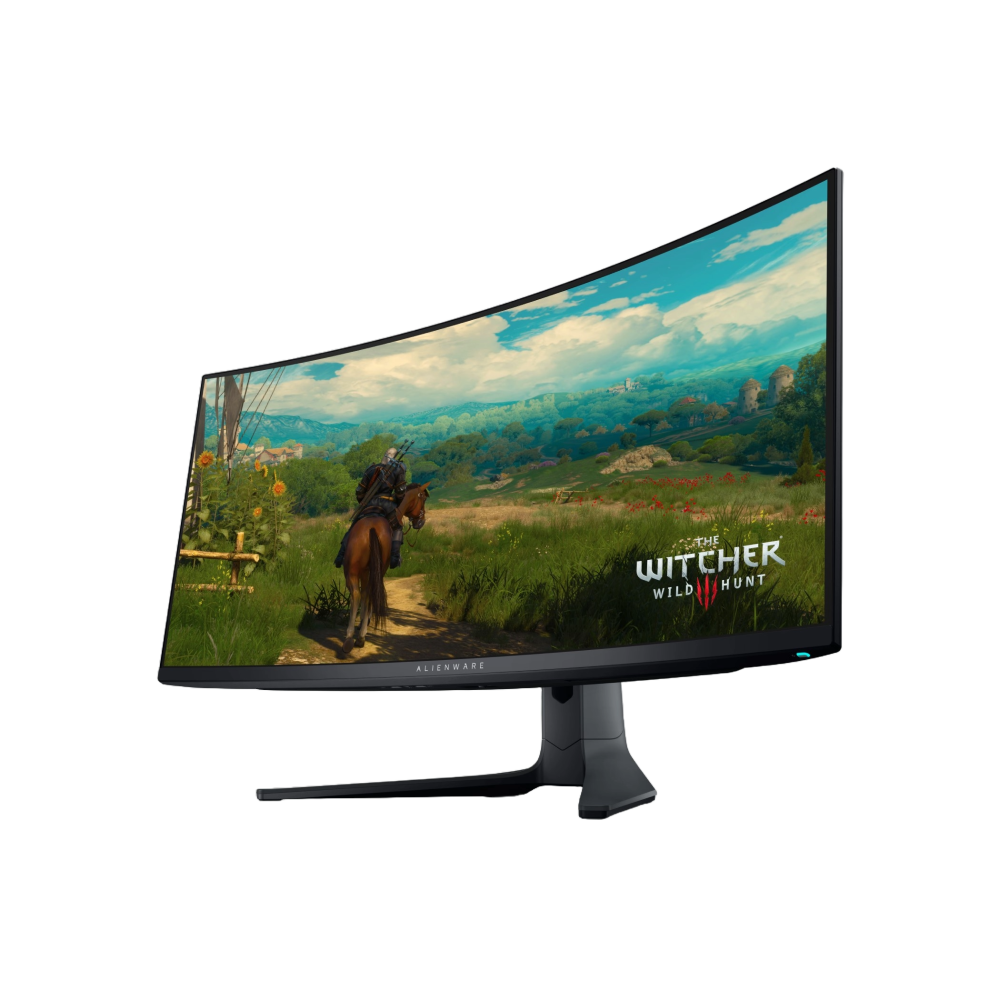

Best Ultrawide Gaming Monitor
Dell Alienware AW3423DWF
$650 $900 Save
$250
The Alienware AW3423DWF has aged like a fine wine. It’s competitively priced and offers almost all bells and whistles found on newer ultrawide gaming monitors including stunning HDR, vivid colors, and lighting fast pixel response time.
|
Pros |
Cons |
|---|---|
|
More affordable than the competition |
Blacks look like grays in brightly lit rooms |
|
4K and 240Hz |
|
|
Virtually no text fringing |
|
|
Impressive HDR |
|
|
Superb motion clarity |
There are several 4K, 32-inch, 240Hz OLED gaming monitors, but the MSI MPG 321URX is the best of the bunch thanks to its competitive price and whisper-silent operation. Zero noise performance was achieved by implementing a custom heatsink instead of a fan to cool down the OLED panel.
240Hz combined with 4K provides a stunning image. It’s razor sharp and super clear due to the incredible motion performance, one of the biggest advantages of OLED monitors over their LCD cousins. The MSI MPG 321URX also offers superb HDR, excellent color accuracy, top-notch VRR support, and a built-in KVM switch, making it the perfect monitor for dual PC setups.
You can expect 1,000 nits of peak brightness in HDR. If you don’t want super bright highlights, the MSI MPG 321URX also supports DisplayHDR 400 True Black, which looks not too shabby on OLED monitors due to its infinite contrast ratio.
Ports-wise, you’re looking at two HDMI 2.1, a single DisplayPort 1.4, a USB-C with DP Alt and 90 USB Power Delivery, and a two-port USB 2.0 hub. The monitor is well-made, and the relatively compact stand is very stable. You also shouldn’t notice text fringing because 4K resolution on a 32-inch panel achieves high enough pixel density for text fringing to not be an issue.
Do note that the MSI MPG 321URX uses a QD-OLED panel, which means blacks look more like grays on purples in bright environments. If you’d rather get a curved 4K OLED gaming monitor, I recommend the Alienware AW3225QF.
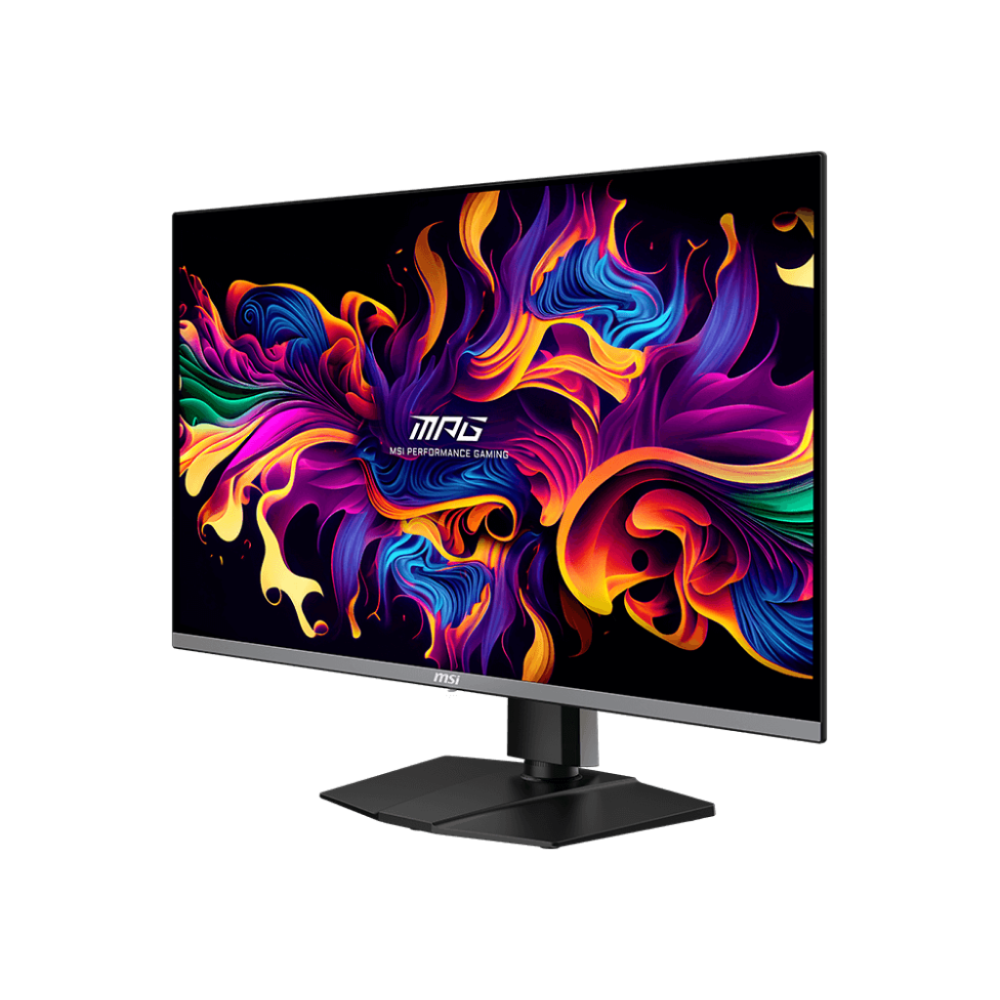

Best 4K Gaming Monitor
MSI MPG321URX
$900 $950 Save
$50
Stunning 4K image quality, QD-OLED panel, 240Hz refresh rate, whisper quiet operation, and commendable HDR. The MSI MPG321URX offers all that and more at an unbeatable price.
Best 144Hz Gaming Monitor: LG 27GN800-B
|
Pros |
Cons |
|---|---|
|
Competitive price |
Poor HDR |
|
Excellent motion performance for an LCD monitor |
Low contrast ratio |
|
Wide color gamut |
|
|
Splendid color accuracy |
Vendors haven’t focused on 144Hz monitors for a couple of years now, but you can still find excellent 144Hz options that sport low prices because they are older models. The LG 27GN800-B is the best choice due to its amazing motion performance and relatively low cost, which almost puts it in the budget gaming monitor category.
The LG 27GN800-B sports a 27-inch, 1440p, 144Hz IPS panel that offers the aforementioned excellent response time for an LCD monitor. The monitor also has a wide color gamut with very accurate factory calibration. It packs a single DisplayPort 1.4 connector and two HDMI 2.0 ports. Although there is no HDMI 2.1 support,you can still achieve the native 144Hz refresh rate at 1440p even with the two HDMI 2.0 ports.
Despite the monitor technically supporting HDR, the only HDR spec fully supported is a wide color gamut. Since the LG 27GN800-B doesn’t feature local dimming zones, a max brightness of only about 350 nits, and poor contrast, HDR content looks washed out, with blacks looking more like grays, which is also an issue with SDR content. In other words, do not buy this monitor if you want a decent HDR experience.
The LG 27GL83A-B is very similar to the LG 27GN800-B in terms of overall performance, including poor HDR implementation and low contrast. I recommend getting it over the LG 27GN800-B only if you find it for less than what the LG 27GN800-B sells for because the 27GL83A-B has a bit slower motion performance.
If you’re looking for a 4K 144Hz monitor, the GIGABYTE M28U and the GIGABYTE M27U Advanced are excellent choices that don’t break the bank.
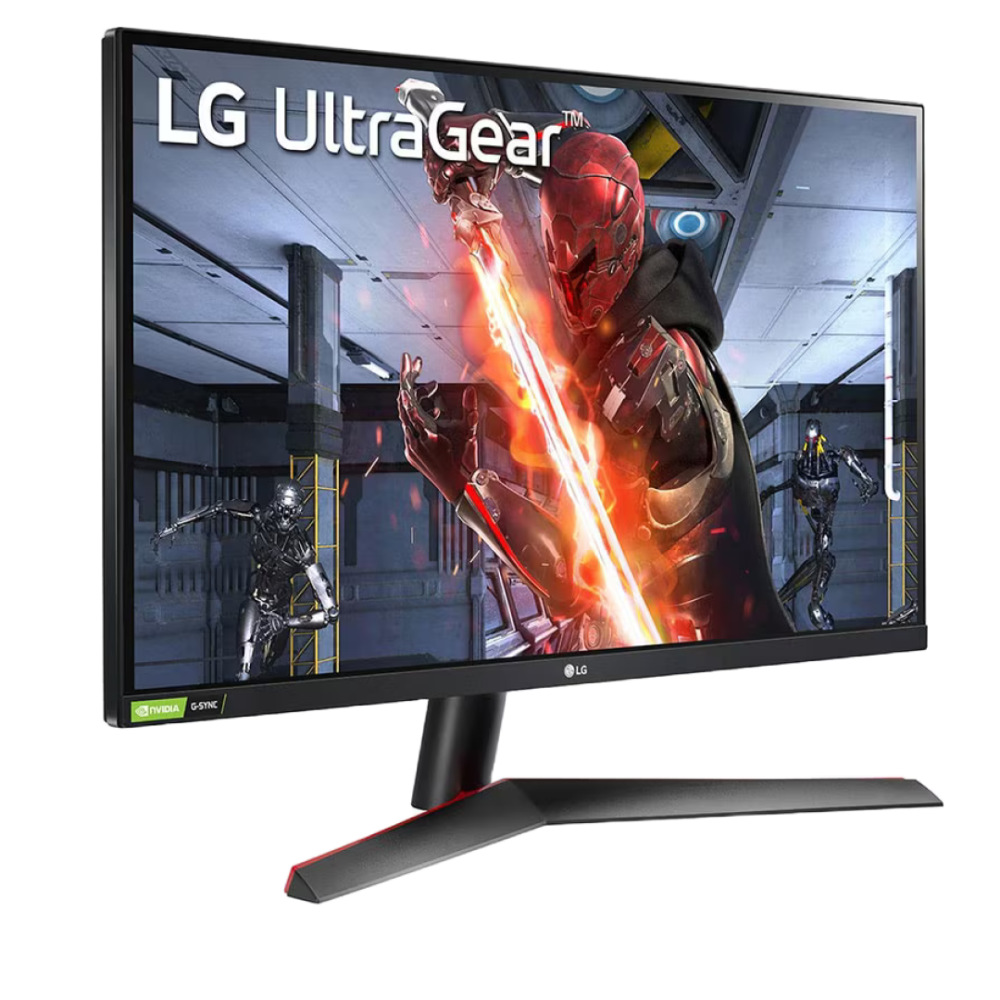

Best 144Hz Gaming Monitor
LG 27GN800-B
While the LG 27GN800-B isn’t the latest and greatest gaming monitor money can buy, it comes with a nice bag of tricks that includes fast motion performance for an LCD panel, excellent colors, and top-notch factory color calibration. All that at a very attractive price.
|
Pros |
Cons |
|---|---|
|
Excellent HDR |
VRR flicker |
|
Competitive price |
Blacks look like grays in brightly lit environments |
|
Superb motion performance |
|
|
Inaudible operation |
|
|
Features a 3rd-gen QD-OLED panel that remedies text fringing issues |
The MSI MAG 271QPX E2 is an absolute win and the best bang-for-buck 240Hz gaming monitor on the market, as long as you’re OK with 1440p resolution. You can get it for less than $700, a great price for a 1440p 240Hz OLED monitor.
The monitor has all the expected OLED goodies: lighting-fast response time, infinite contrast, a wide color gamut, and low input lag. The HDR implementation is excellent. You can expect about 800 nits of peak brightness when HDR is active and about 270 nits for a 100% window brightness.
You’ll find two HDMI 2.1 ports on the rear, a single DisplayPort 1.4a connector, and a single USB-C port with DP Alt and 15W USB PD. The 3rd-gen QD-OLED panel from Samsung found on the MSI MAG 271QPX E2 has an improved subpixel layout, making text fringing issues a thing of the past. The said QD-OLED panel is cooled off with a massive heatsink, resulting in an inaudible operation, which is always nice to see on an OLED monitor.
Despite rocking the latest and greatest QD-OLED panel, brightly lit environments will make black levels rise and look dark gray or purple, something that Samsung still hasn’t solved. Another downside is that VRR flicker is noticeable at lower refresh rates.
The LG 27GS93QE provides an excellent alternative without blacks looking like purples in brightly lit rooms thanks to LG’s WOLED panel. 1440p doesn’t cut it? Then check out the MSI MPG 321URX, a fantastic 4K 240Hz OLED gaming monitor.
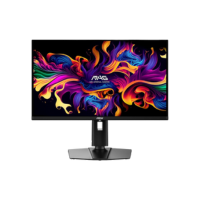

Best 240Hz Gaming Monitor
MSI MAG 271QPX QD-OLED E2
$604 $700 Save
$96
Looking for an excellent bang-for-buck OLED gaming monitor? Check out the MSI MAG 271QPX QD-OLED E2, which offers stunning HDR, low input lag, inaudible operation, and no text fringing because it uses the latest QD-OLED panel from Samsung.
FAQ
What monitor resolution do I need for gaming?
This all depends on your needs, budget, and your graphics card and CPU combo. If you’re a budget gamer, 1080p is still a pretty solid choice, as long as you opt for a 144Hz or higher refresh rate. 1440p is the sweet spot, with many mid-range GPUs being able to run modern AAA games with medium to high settings at 60 FPS or higher at 1440p. The 4K resolution is reserved for high-end gamers and gamers who are ready to sacrifice high refresh rates and eye candy for the crisp image found on 4K gaming monitors.
Can I use a gaming monitor for productivity?
Of course, many gaming monitors are also great for work and productivity. That said, if you’re after an OLED monitor, make sure you know the downsides of the OLED technology (burn-in risk, text fringing issues found on many OLED monitors) if you want to use it both for business and pleasure.
Should I get an ultrawide gaming monitor?
If you prefer ultrawide (21:9 and wider) aspect ratios, there’s no reason not to get an ultrawide gaming monitor. Most modern games support ultrawide aspect ratios and while older games usually lack support for ultrawide monitors, the worst thing you can experience in said games are black bars on the sides.
How do I clean my monitor?
The best way to clean your monitor is to turn it off and unplug it first. Next, use a slightly damp microfiber cloth to clean the screen and the back from dust. Then get a dry microfiber cloth and repeat the procedure.


